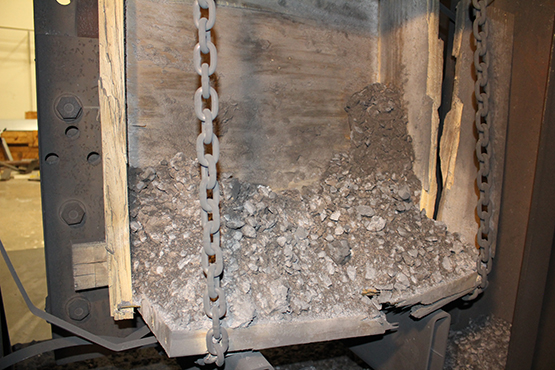Background
With the recent successful NASA Double Asteroid Redirection Test (DART) mission, we know that we can impact an asteroid and deflect it. A major experimental result from the DART impact is the momentum enhancement β, namely how much momentum was transferred to the moonlet Dimorphos vs. the momentum of the incoming DART spacecraft. Our objective was to perform some momentum enhancement experiments with our two-stage light gas gun that were more representative of Dimorphos based on the images taken of the asteroid before the impact.
An objective of the work was that it be performed in time to be part of the DART Nature special issue. We were included as authors of the momentum enhancement paper, but the details of our work done on this project were not included there. However, our previous experimental work was referenced.
Approach
We performed five impact tests between 5 and 5.5 km/s into large targets made of crushed basalt (for example, Fig. 1; all targets were over 500 lbs.).
Accomplishments
The momentum enhancement βs ranged between 3 and 5. These results are being analyzed in the context of the DART mission, where the nominal β is estimated to be 3.6, though the mass of the asteroid Dimorphos is considered unknown at this point. Our work is helping identify how the DART result can be extrapolated to other Potentially Harmful Object impact scenarios. These results were presented at a variety of meetings, including LPSC, ACM, DPS and ISB, as well as DART and Hera impact working group meetings.

Before impact.

After impact.
Figure 1 & 2: Images of a crushed basalt target held together with a sand/grout mixer, before and after the impact event. Target was impacted at 5.50 km/s by a 3-cm-diameter aluminum sphere (LGG-407).
